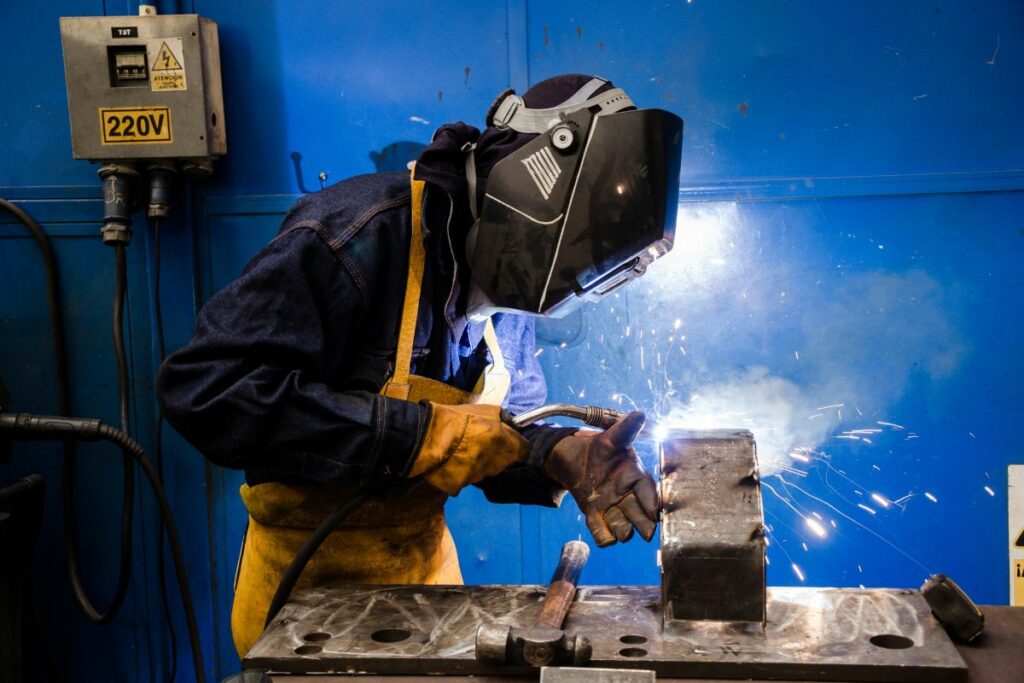
Welding as a technical field covers a wide range of various procedures. It can be regarded as a trade not for everyone as it requires a certain degree of skill and competency. That goes without saying, the hazards welding brings are inevitable. This article aims to discuss some hazards that welders may potentially encounter and how they can proactively take steps to ensure safety.
Since welding involves the fusion of metals, hazardous fumes are potential risks when emitted. For instance, some of the most dangerous fumes are caused by hexavalent chromium and manganese. Excessive exposure to metal fumes and gases can cause several health problems such as cancer, respiratory illnesses, and impaired speech and movement. While overexposure to hexavalent chromium would lead to health hazards as well like lung cancer and eye or skin irritations.
To avoid this hazard, engineering controls like exhaust ventilation can be utilized in managing welding fumes and gases. Some other methods also include fume extraction welding guns to control exposures to fumes at an acceptable level. Respirators can also be used as the last step in analyzing the exposure limit of the substances.
Physical hazards are some of the most common dangers in welding. These include slight cuts, severe injuries, eye damage, burns, and crushed toes or fingers. Welding can also prompt slipping or falling incidents depending on where the welding occurs.
Welders must always wear the appropriate Personal Protective Equipment (PPE) to prevent any physical injury or illness. This includes long-sleeved shirts, respirators, welding helmets, boots, gloves, and earplugs. It is also important to maintain equipment such as passageways, stairways, scaffolds, runways, or platforms to avoid slipping or falling.
Electric shock is one of the most pressing and abrupt hazards confronted by welders. This serious risk to the human body does not only cause serious physical injuries but at times, immediate death. This is usually caused by live electrical circuits melting metals during welding procedures. If the welder is not able to notice touching metals with different voltages or grounded metals, the results can be lethal.
To avoid these dangers, one must conduct proper insulation and ensure that the objects in the welding area are dry. Welders must avoid touching objects if their hands or clothing are wet. There must also be a proper and thorough inspection of the area and equipment before working. Use rubber mats or other types of insulation if necessary.
The presence of flammable materials in the working area mainly causes fire or explosion. These are not isolated incidents since welding-related fires are very much common. Structure fires and damage to property are highly attributed to welding operations. Sparks, droplets of melted metal, or torch flames cause welding fires. This hazard can also come from combustible materials in contact with a hot workpiece or heat.
To avoid fire and explosion, there is a standard procedure where specific areas or locations must be approved for hot work operations. The workplace must be assessed and examined for it to be free from combustible and flammable contents. One can also ensure a hot work permit so that individuals are aware of the hazards associated with hot work and welding.
Overexposure to intense heat and exposed skin mainly cause burns. Welders suffer from burn hazards caused by sparks or spatter flying off as well as from hot equipment. Most often than not, it would also even lead to radiation burns. In 2018, the Bureau of Labor Statistics reported that more than 140 of the 370 welding and heating tool-related injuries were thermal or heat burns. These burns can occur to the skin and worst, to the eyes.
It is fundamental to wear, first and foremost, the proper personal protective equipment to prevent burns. Ensure that the gloves used do not have holes and that clothes are without cuffs or open pockets. Avoid polyester clothing as it melts easily, and leather jackets are highly encouraged when doing the work for their thermal and fire resistance features.
The enumerated welding safety practices are universally applicable. As much as you ensure everything is a hundred percent safe and in place, there are still incidents beyond one’s control. Hazards and danger cannot be completely eliminated but the risks can be reduced through the religious, strict, and proper implementation and adherence of safety procedures.